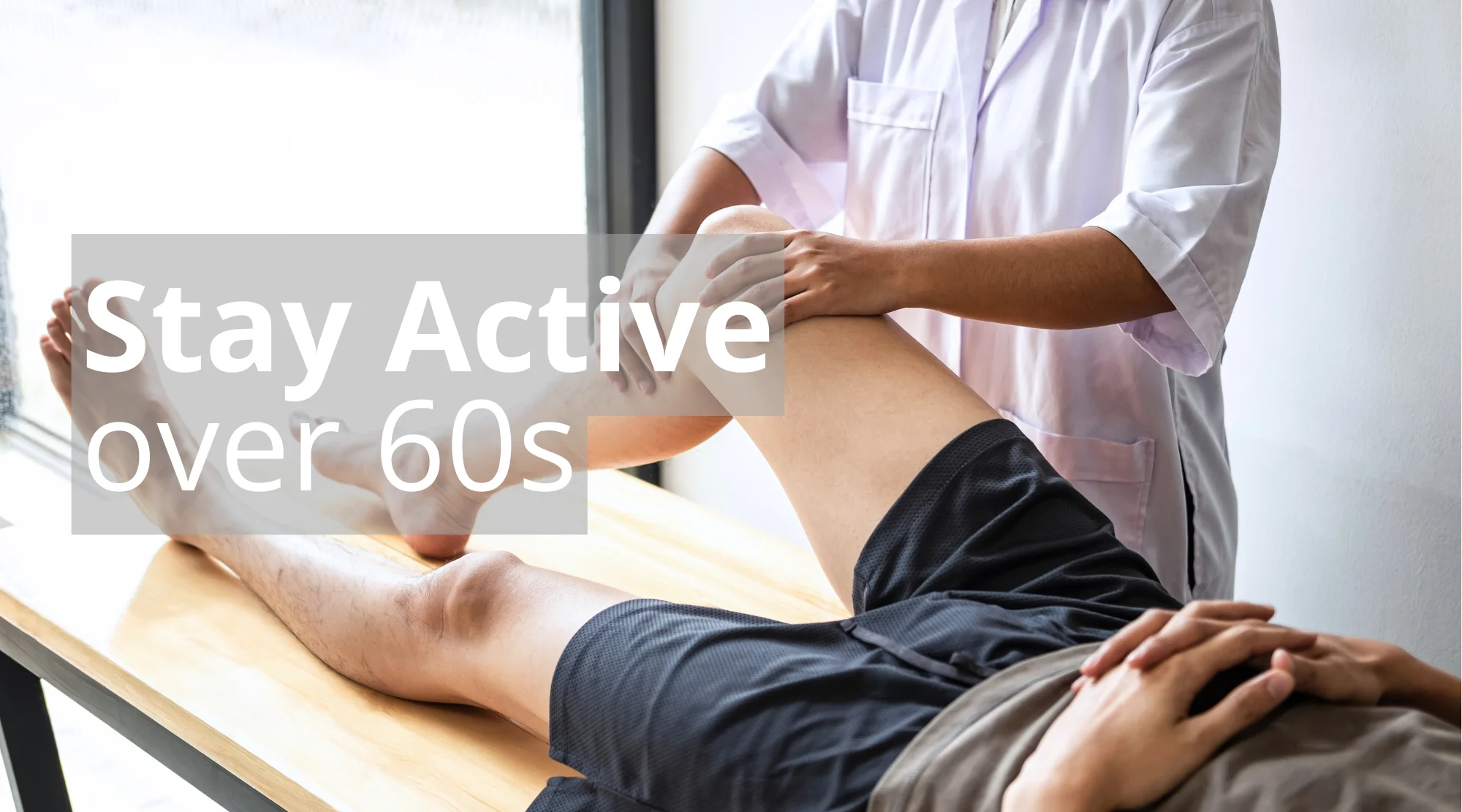Staying active and maintaining a healthy lifestyle is crucial, especially as we age. But what are the best exercises for seniors? Forget the outdated notions of immobility in later life; modern science champions movement as a cornerstone of well-being, offering a wealth of benefits from improved mobility to a sharper mind. This guide will equip you with practical advice and actionable strategies to embrace an active and fulfilling life beyond 60.

Debunking Myths About Exercise for Seniors
For years, misconceptions have surrounded exercise for older adults. Many believe that strenuous activity is unsafe or even harmful, particularly regarding strength training. However, the reality is quite the opposite. Regular physical activity is not only safe but also vital for maintaining independence, preventing chronic diseases, and enhancing overall quality of life. Let’s dispel some common myths:
- Myth: Seniors shouldn’t lift weights.
Fact: Strength training is crucial for maintaining muscle mass, bone density, and balance, reducing the risk of falls and improving overall strength. This can also help in the prevention of injuries in daily activities.
Myth: Exercise is too risky for older adults.
Fact: While it’s essential to consult with a healthcare provider before starting any new exercise program, moderate-intensity exercise is generally safe and carries far fewer risks than a sedentary lifestyle.
Myth: It’s too late to start exercising in your 60s.
- Fact: The human body is adaptable at any age. The benefits of exercise, including improved cardiovascular health, mood enhancement, and increased energy levels, can be achieved regardless of age.
The Science-Backed Benefits of Physical Activity
Embracing an active lifestyle in your 60s and beyond offers an array of health advantages, supported by extensive scientific research.
- Enhanced Cardiovascular Health: Regular physical activity strengthens the heart, lowers blood pressure, and improves cholesterol levels, reducing the risk of heart disease, stroke, and other cardiovascular problems. You can read more about it here: 2025 AHA Blood Pressure Guidelines: New Recommendations for Optimal Health
- Improved Cognitive Function: Exercise promotes blood flow to the brain, which can boost memory, focus, and cognitive function. Studies suggest it may also reduce the risk of age-related cognitive decline and dementia.
- Increased Muscle Mass and Strength: Strength training exercises help maintain and build muscle mass, which naturally declines with age. Stronger muscles support mobility, balance, and overall physical function.
- Better Bone Density: Weight-bearing exercises and strength training help increase bone density, reducing the risk of osteoporosis and fractures.
- Enhanced Mood and Mental Well-being: Exercise is a natural mood booster, releasing endorphins that can reduce stress, anxiety, and symptoms of depression.
Crafting Your Personalized Exercise Plan
The key to successful exercise in your golden years is personalization. Consider these guidelines when designing your activity regimen:
- Consult Your Doctor: Before embarking on any new exercise program, speak with your doctor. They can assess your health, identify any limitations, and provide personalized recommendations.
- Start Slowly and Gradually Increase Intensity: Begin with gentle activities and gradually increase the intensity and duration as your fitness level improves. Listen to your body and don’t push yourself too hard, especially in the beginning.
- Incorporate a Variety of Activities: A balanced approach that includes aerobic exercises, strength training, and flexibility exercises is optimal for overall health.
Recommended Exercise Regimen
For most seniors, a well-rounded exercise plan typically includes:
- Aerobic Activity: Aim for at least 150 minutes of moderate-intensity aerobic exercise (like brisk walking or cycling) per week, or 75 minutes of vigorous-intensity activity (like jogging).
- Strength Training: Incorporate strength training exercises that work all major muscle groups at least twice a week. Examples include using resistance bands, light weights, or bodyweight exercises.
- Flexibility and Balance Exercises: Include stretching exercises to improve flexibility and balance exercises to reduce the risk of falls.
- Daily Steps: Aim for 8,000 steps a day. Consider trying this 30-Minute Walking Workout: Maximize Calorie Burn and Boost Joint Mobility.
Exercises to Consider
Here are some exercises you can explore, always considering your current fitness level:
- Walking: A low-impact, accessible exercise that can be easily incorporated into your daily routine.
- Swimming: Provides a full-body workout with minimal stress on joints.
- Cycling: A great option for cardiovascular fitness, which can also be modified to suit your fitness level.
- Chair Exercises: If mobility is limited, chair exercises can provide a safe and effective way to build strength and flexibility.
- Strength Training with Light Weights: Use light dumbbells or resistance bands to build muscle strength. Check out: Roxanne Push-Up Challenge: Unleash Your Fitness with This Fun Workout!
The Importance of Nutrition and Lifestyle
Exercise is just one piece of the puzzle. A healthy lifestyle also encompasses good nutrition, sufficient sleep, and stress management.
- Eat a Balanced Diet: Focus on a diet rich in fruits, vegetables, whole grains, lean protein, and healthy fats. Stay hydrated. Consider reading this: Is Full-Fat Dairy Healthy? Unpacking the Latest Nutrition Science & Recommendations
- Get Enough Sleep: Aim for 7-9 hours of quality sleep per night to allow your body to recover and repair itself.
- Manage Stress: Practice relaxation techniques such as deep breathing, meditation, or yoga.
- Stay Socially Active: Engage in social activities to combat isolation and promote mental well-being.
Final Thoughts
Embracing an active lifestyle in your 60s and beyond is an investment in your health, well-being, and longevity. By dispelling myths, understanding the benefits, and creating a personalized exercise plan, you can enjoy a vibrant and fulfilling life. Remember, it’s never too late to start. Consult your doctor, start slowly, and celebrate every step of your active journey! For more health insights, visit: [https://www.cdc.gov/](https://www.c














2 comments